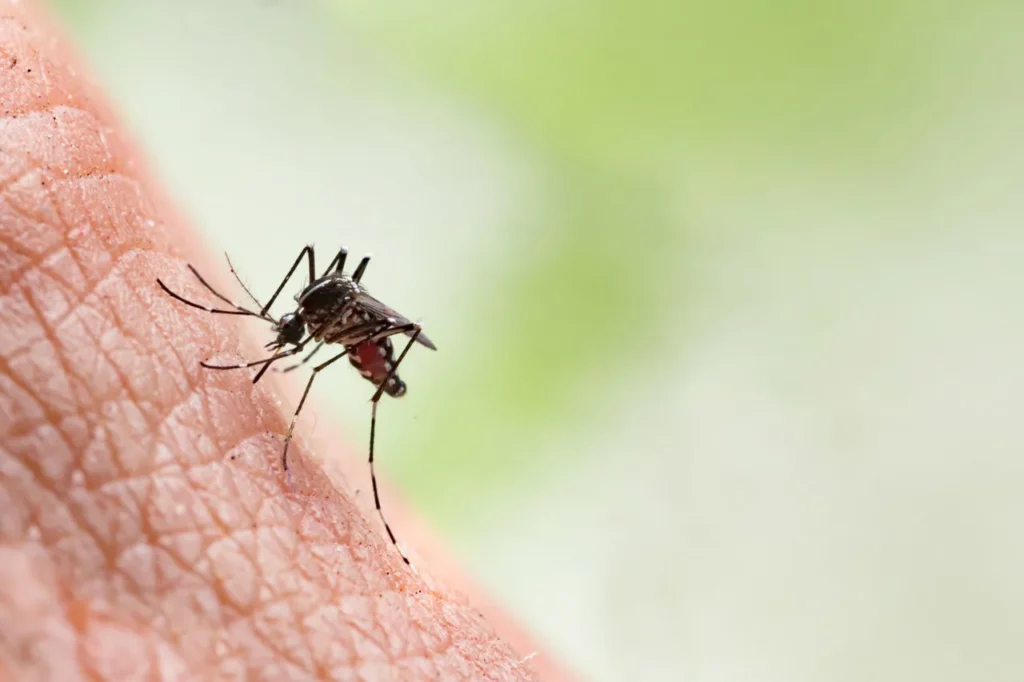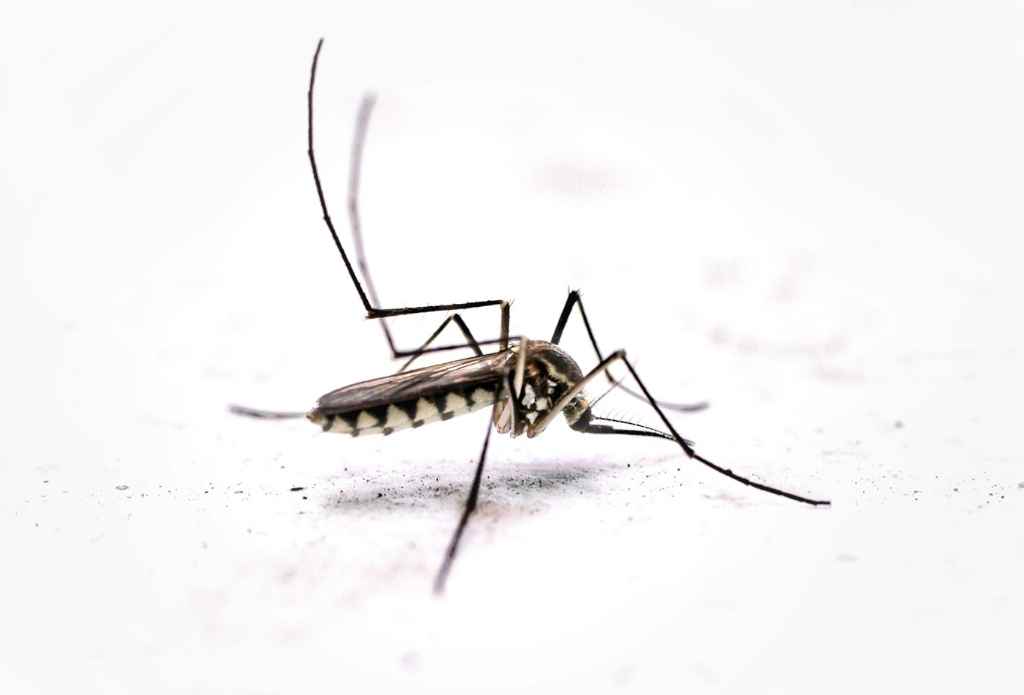|
The Qista team wishes you a very happy festive season! Our offices will be closed from 20 December 2025 to 4 January 2025 inclusive.
|
Home / Mosquito Information / Mosquito identification page

The best way to fight effectively against mosquitoes is to know them! Did you know that there are over 3,500 different species of mosquitoes in the world? So why do they bite us? Why do their bites make us itch? What attracts them?
More importantly, who are they and which ones do we find in our part of the world? Below are a few answers to familiarise yourself with these little pests and to know how to get rid of them.
Mosquitoes belong to the insect family Culicidae and are essential to the proper functioning of ecosystems.
They are diptera which means that they only have one pair of wings, like flies for example. Present on every continent except Antarctica (are mosquitoes skittish?), they usually measure less than a centimetre and have differences depending on their gender: the males are recognisable due to their feathery antennae while the females have a tube-shaped mouthpiece to bite and suck blood.


Not all mosquitoes bite! They are attracted by human odours but also by dark colours, heat and the CO2 released by their targets, this is the reason why they attack humans in particular.
Only the females need blood to provide protein to their eggs so they mature before the laying period. Knowing that they can lay up to 200 eggs every 48 hours, the frequency of their bites can increase in high season. The itching from their bites is caused by their allergising saliva. Otherwise, both female and male mosquitoes feed on flower nectar and plant sap which makes them excellent pollinators!
3,500 species worldwide, 105 in Europe and 67 in France.
Amongst these, only 15 are prone to biting humans. Mosquitoes can be divided into three main types: the Aedes, the Anopheles and the Culex, let’s learn more about them.
The Aedes, also called the “singing” mosquitoes, are not the most common but are among the most well-known, mainly due to the Aedes albopictus: the famous tiger mosquito.
The Aedes mosquitoes are more diurnal so the females bite during the day and mostly outdoors. Fans of surroundings subject to temporary flooding, they can be found in swampy areas such as Brittany or the Camargue for example, throughout Languedoc Roussillon, and particularly in urbanised areas.
Recognisable by its black stripes, the tiger mosquito is a particularly invasive species. Entomologist experts predict that it will have penetrated the majority of countries by 2030. It is also the most dangerous species as they are potential vectors of diseases such as the Chikungunya, Zika or even Dengue viruses. Originating from Asia, it can be seen (and bites us) from May to end of October.
The female only lives for a few weeks and bites mostly in the mornings and evenings, but can also bite during the day in shady areas. Its habitat is urban, it withstands drought well and its preferred laying sites are the banks of flooded areas: water containers such as plates filled with rainwater, watering cans, pot trays, etc. Remove or drain containers to control its proliferation. Once laid, the eggs can take up to 7 months to hatch in favourable conditions!
It measures around 5 millimetres and is recognised by its reddish colours, its light and horizontal chest stripes, and its white stripes on the legs, however these are difficult to see with the naked eye.
Brown with ochre stripes on the body. Called the spring mosquito, it measures over a centimetre and appears in early April. The females bite mainly in the mornings and evenings but can also be aggressive during the days in green spaces.
Black with white spots on the body only, the Aedes sticticus is a summer species that can be found in damp and wooded surroundings from May to September.
Takes its name from its physical feature: its legs are black with one white spot on the joint (geniculatus means “knee” in Latin). This species settles in hollow trees where rainwater collects and stands, and thrives between April and October especially during spring showers. Extremely aggressive towards humans, the females bite us mostly during the day.
Other less widespread species like the Aedes japonicus or Aedes koreicus have also been reported a few times in France.
The Anopheles are found in the south of France and particularly in the rice fields of the Rhone delta and wetlands of Corsica.
Active at dawn and dusk, they are recognisable thanks to their spotted wings, their raised stomach at rest and silent flight. 464 species make up the Anopheles family, which means “useless” in Latin (and “harmful” in ancient Greek). Nevertheless, they do bite and are largely responsible for the malaria transmission through the plasmodium parasite.
A semi-permanent to permanent water environment species. Large-sized mosquitoes that can grow to a centimetre, their name means “spotted wings” in Latin. These mosquitoes breed continuously therefore hatching eggs, larvae and adults are all found at the same time. Larvae can grow just as well in ponds, ditches or containers collecting water for gardening. The female mosquito does not often bite humans and prefers to take blood from cattle, birds and wild animals.
Other species such as the Anopheles algeriensis, Anopheles petragnani, Anopheles claviger, Anopheles hyrcanus or even the Anopheles plumbeus, are also found in Europe and have the same type of features.
The Culex are a type of mosquito made up of 20 subspecies including thousands of species. The Culex particularly enjoy stagnant water bodies and this is the perfect place where they generally settle to lay their eggs.
They are particularly attracted to containers and outdoor items where water collects: garden pots, containers, gutters, septic tanks, ditches, ponds, etc.
In Guadeloupe, the Culex are called “maringouins” and are the most common and widespread species in France with nearly 770 subspecies. Carriers of vector-borne diseases such as Japanese encephalitis, Usutu virus or Nile Fever (or West Nile virus), they measure between 5 and 7 mm long and their wings go slightly beyond the stomach.
Amongst these, the most widespread are the Culex pipiens that can be found in all settings: cities and countryside, temperate areas, tropical climates, etc.
The common house mosquito is the most well-known mosquito. Fans of indoor spaces and extremely attracted to humans, they can transmit diseases such as Nile Fever. They mostly live in towns and prefer to bite during the night.
Possess the same features but can be a Nile Fever carrier. However, it is not yet found in Europe and is currently located in North America.
Completely harmless, the Cousin (Diptera Tipulidae) or the Crane Fly looks like a large mosquito but does not bite! Only its larvae have a harmful effect on seedlings as they feed on the roots in the ground and they yellow plantings prematurely.
The Qista Mosquito Trap does not capture any insects and only targets mosquitoes that bite: the females.
Genuinely effective and safe for the environment, the Qista Mosquito Trap is now the highest performing on the market with an 88% reduction in bites, with no negative impact on humans, animals and biodiversity !
Following an implementation study and targeted installation, the trap diffuses carbon dioxide which imitates human breathing. It also emits a lure scent that simulates the smell of the human body. The mosquito is therefore attracted towards the trap and captured through suction.
One trap alone is effective up to a 60 metre range and establishes a near impassable barrier between the proliferation areas and the areas to protect. The solution to fight against mosquitoes on a large scale.
